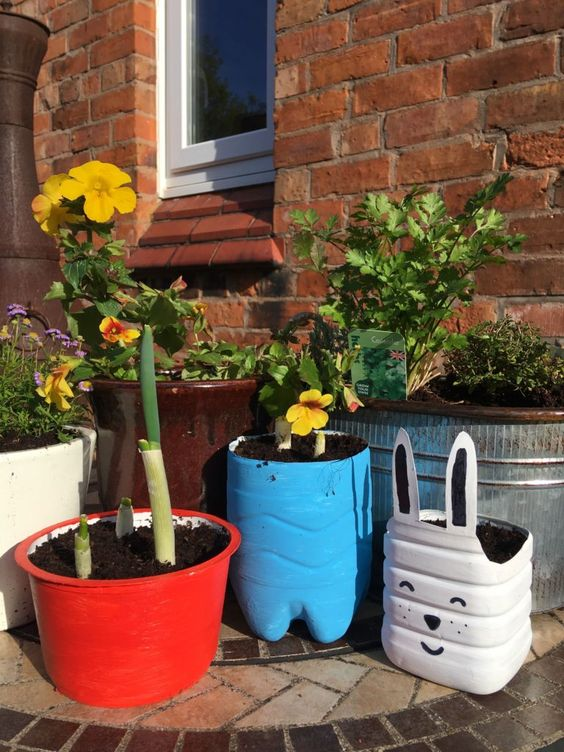Container gardening is a type of gardening that has gained popularity in recent years. With more and more people living in urban areas or having limited outdoor space, container gardening allows individuals to grow plants in small spaces. In this comprehensive guide, we will explore the benefits of container gardening, the types of containers available, the types of plants that are best suited for container gardening, and how to care for your plants.
Tips on small space gardening.
Benefits of Container Gardening One of the main benefits of container gardening is that it allows individuals to grow plants in small spaces. Whether you have a small balcony, a windowsill, or a small patio, container gardening enables you to enjoy the benefits of gardening. Container gardening is also highly flexible, as containers can be moved to take advantage of different levels of sunlight or to provide protection from the elements. This makes it ideal for individuals who live in areas with variable weather conditions.
Another benefit of container gardening is that it allows for better pest control. Because plants are grown in containers, they are less susceptible to pests that live in the soil. This means that you can avoid the use of pesticides, which can be harmful to both plants and people. Container gardening is also a great way to experiment with different types of plants, as you can easily move containers to create different microclimates within your space.
Types of Containers When it comes to container gardening, there are many types of containers available. Some of the most common include:
Terracotta pots: These pots are a classic choice for container gardening. They are made from fired clay and have a natural look that works well with many types of plants. They are also porous, which means they allow air and water to move through the soil, promoting healthy root growth.
Plastic containers: Plastic containers are lightweight and easy to move, which makes them a popular choice for container gardening. They are also available in many different sizes and colors.
Metal containers: Metal containers are durable and can add a modern, industrial look to your space. They can be a bit more expensive than other types of containers, but they are often worth the investment.
Wooden boxes: Wooden boxes are another popular choice for container gardening. They are versatile and can be made in many different sizes and styles. They are also relatively easy to make yourself if you have some woodworking skills.
Repurposed items: You can also use repurposed items such as old buckets, cans, or barrels as containers for your plants. Just make sure that they are clean and have drainage holes to allow excess water to escape.
When choosing a container, it's important to consider the type of plant you want to grow. Some plants, such as succulents, prefer shallower containers, while others, such as tomatoes, need deeper containers. You should also consider the material of the container and how it will affect the plant. For example, terracotta pots can dry out quickly, which can be a problem for plants that require more moisture.
Types of Plants for Container Gardening Almost any plant can be grown in a container, but some are better suited to this type of gardening than others. Here are some examples of plants that do well in containers:
Herbs: Herbs like basil, parsley, cilantro, and thyme are popular choices for container gardening. They require minimal space and can be used fresh in cooking.
Vegetables: Tomatoes, peppers, and cucumbers are all popular choices for container gardening. They require deep containers and need to be watered regularly.
Flowers: Container gardening is a great way to add color to your space with flowers such as marigolds, petunias, and pansies.
Succulents: Succulents are a popular choice for container gardening because they are low-maintenance and come in a variety of colors and shapes. They prefer shallow containers and don't require a lot of water.
Small Trees: Some small trees, such as citrus trees, can be grown in containers. This allows individuals with limited space to enjoy the benefits of fresh fruit without needing a large yard.
Watering: Plants in containers dry out more quickly than plants in the ground, so it's important to water them regularly. The frequency of watering will depend on the type of plant and the size of the container. To check if your plant needs water, stick your finger about an inch into the soil. If it feels dry, it's time to water.
Fertilizing: Container plants require regular fertilization to ensure that they have enough nutrients to grow. You can use a liquid fertilizer once a month or a slow-release fertilizer at the beginning of the growing season.
Pruning: Regular pruning can help keep your plants healthy and looking their best. Remove any dead or yellowing leaves and trim back any overgrown stems.
Repotting: As your plants grow, they may need to be repotted into larger containers. This is especially true for plants that have outgrown their current container or that are showing signs of stress such as yellowing leaves or stunted growth.
Caring for Your Plants Caring for container plants is relatively easy, but it's important to keep a few things in mind. Here are some tips for caring for your container plants:
Conclusion Container gardening is a great way to enjoy the benefits of gardening even if you have limited space. With the right container, soil, and plant selection, you can create a beautiful and productive garden in even the smallest of spaces. By following the tips outlined in this guide, you can create a thriving container garden that will provide you with fresh herbs, vegetables, and flowers throughout the growing season.













